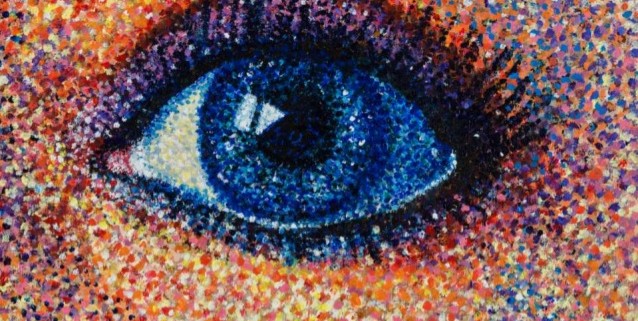Lost & Found: How to Find Yourself in Your Twenties
I spent the majority of Saturday afternoons in my twenties heading to coffee shops on the weekends with the goal of trying to figure it out. “It” being life. Coffee cup in hand, I would chart out all the possibilities with pen and paper. Every single week, I would sit there and hope some bright beam of light would shine down on me offering that “Ah-ha” Oprah moment where everything would make sense and I’d know exactly what I should be doing with my life.
Now, it’s not like I looked lost to other people. I actually looked like I had everything figured out: by my 25th birthday, I had a couple degrees behind me, a job as a terrorism analyst that sounded responsible (and, dare I say, “cool” in the early post- 9/11 world). I had already traveled to nearly 15 countries, spent summers volunteering, and had managed to convince colleagues, friends and family that I knew exactly what I was doing with my life. Despite this polished veneer, I felt totally lost.
Fast forward five and a half years and I was in a different boat all together. Over the second half of my twenties, I gained a directed sense of purpose. Holding back on details of those 5 years, I’ll instead offer the top 3 things that helped me move from feeling lost to found. Coincidently, these are also some of the top things I work on with my clients who are in the midst of a quarterlife crisis. These 3 things help gain momentum and a greater sense of purpose:
- Go with the flow. Realize and accept that you actually won’t figure it out now. I used to have a greeting card on my bulletin board at work that said something like, “Don’t worry. Don’t hurry. Slow down. Trust the process.” Thanks to social media comparisons and our general fast pace of life, it’s very difficult to take a breath and realize that figuring out life is truly a process. We don’t start first grade expecting to graduate 12th grade in one day. Similarly, life in your twenties is a process; knowing your purpose and direction comes over time and as a result of great self awareness, inquiry, and experience. Get comfortable with not knowing yet. I wish someone had told me this so I wouldn’t have stressed every week at coffee shops trying to figure it all out in one swoop. Trust me and relax: It’s a process.
- Look for the themes in your life. One of my most trusted and respected advisors once told me to not only notice the themes in my life, but to honor them. Until that conversation, I hadn’t paid much attention to my past – more specifically, things in my past that I naturally loved and enjoyed doing, or that I was naturally interested in during my teens and early twenties. By noticing recurring themes in my life – that I love helping, teaching and coaching others, that I enjoy understanding human development, that I get excited about running programs and organizations – I was able to more clearly see that my direction and purpose had something to do with creating a company focused on empowering twenty-somethings to live meaningful lives sooner. A question for you: What interests and roles have you naturally gravitated toward in your life? Think of the ones that have given you joy and energy. Find those themes and honor them.
- Go. Do. Experience. There’s a class at Stanford called “Fail Fast Fail Often.” Based on a book of the same name and taught by the book’s authors, Ryan Babineaux and John Krumboltz., the class focuses on how to move forward successfully in life. Spoiler alert: the crux of it all is that you must do. My mistake in my twenties was sitting and thinking about doing. Instead, I would have benefited from someone nudging me to try new things that I might find interesting and doing new things all the time. By doing, we find out much more quickly what we like and what we don’t; we also are able to find our themes (mentioned in point #2 above) much more quickly and clearly. The momentum and wisdom we gain from doing, without a doubt, helps to move anyone from lost to found. So, the big take away here is: go out and do.
On a final note, I like to remind clients that life is actually not about connecting the dots. It’s about creating a series of dots in your twenties (and beyond) that are part of a much bigger picture. Think of it like George Seurat’s famous painting, A Sunday Afternoon on the Island of La Grande Jatte: up close, you find only dots, but from a far, you find that those dots are part of a huge, beautiful picture. Feeling lost happens when we focus on one individual dot alone. Feeling found comes when we allow ourselves freedom to create many dots – some that don’t make total sense yet – while knowing that something much bigger is being created that often times takes some time to see.




